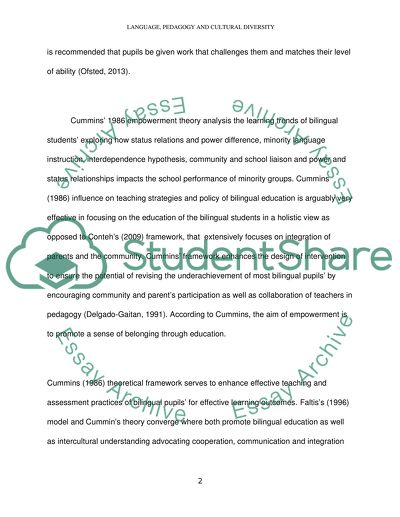Cite this document
(“LANGUAGE, PEDAGOGY AND CULTURAL DIVERSITY. Policy and practice in the Essay”, n.d.)
LANGUAGE, PEDAGOGY AND CULTURAL DIVERSITY. Policy and practice in the Essay. Retrieved from https://studentshare.org/education/1687015-language-pedagogy-and-cultural-diversity-policy-and-practice-in-the-education-of-bilingual-children
LANGUAGE, PEDAGOGY AND CULTURAL DIVERSITY. Policy and practice in the Essay. Retrieved from https://studentshare.org/education/1687015-language-pedagogy-and-cultural-diversity-policy-and-practice-in-the-education-of-bilingual-children
(LANGUAGE, PEDAGOGY AND CULTURAL DIVERSITY. Policy and Practice in the Essay)
LANGUAGE, PEDAGOGY AND CULTURAL DIVERSITY. Policy and Practice in the Essay. https://studentshare.org/education/1687015-language-pedagogy-and-cultural-diversity-policy-and-practice-in-the-education-of-bilingual-children.
LANGUAGE, PEDAGOGY AND CULTURAL DIVERSITY. Policy and Practice in the Essay. https://studentshare.org/education/1687015-language-pedagogy-and-cultural-diversity-policy-and-practice-in-the-education-of-bilingual-children.
“LANGUAGE, PEDAGOGY AND CULTURAL DIVERSITY. Policy and Practice in the Essay”, n.d. https://studentshare.org/education/1687015-language-pedagogy-and-cultural-diversity-policy-and-practice-in-the-education-of-bilingual-children.


